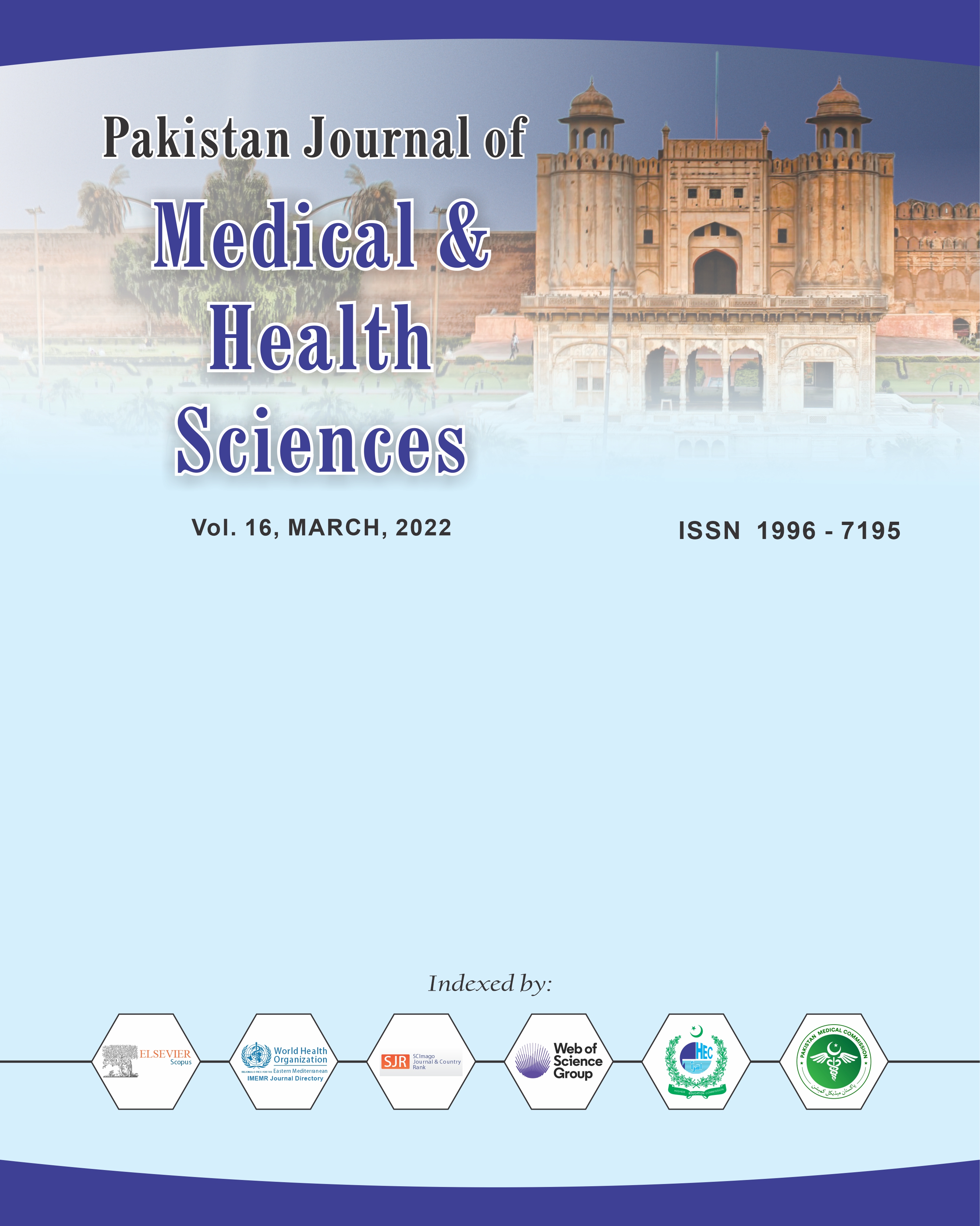Frequency and Nature of Near Miss Obstetric Complications in tertiary care Hospital South Punjab
DOI:
https://doi.org/10.53350/pjmhs22163250Keywords:
Near miss, Obstetrical events, Anemia, Sepsis, HemorrhageAbstract
Objective: To analyze the nature of near miss obstetrical events in a tertiary care hospital of South Punjab.
Study design: A Case Series.
Settings: This study was carried out in labour room and intensive care unit (ICU) at Nishtar Hospital Multan.
Material & Methods: Study consists of near miss cases between January 1, 2020 to January 1, 2021. Near miss cases definition was based on validated disease specific criteria, including five diagnostic categories: hemorrhage, hypertensive disorders in pregnancy, dystocia, sepsis and anemia. SPSS version 23 was used for data analysis. Test of significance were applied and p value ≤0.05 was considered as significant.
Results: A total of 166 patients were included in this case series. The most common surgical procedure performed was emergency hysterectomy, n=64 (60.3%). While the most common complications included sepsis and anemia, n=34 (32.1%) and n=31 (29.2%), respectively. The mean hospital stay of the patients was 5.51±2.11 days. Majority of the patients stayed for 3-5 days in hospital.
Conclusions: Majority of near miss cases reported from rural areas of Punjab where socioeconomic status and literacy rate are also contributors. Anemia and sepsis were leading complications of near miss events and maternal deaths. Underlying disease process of our observation is almost same as in previous Pakistani reports.
Downloads
How to Cite
Issue
Section
License
Copyright (c) 2022 Pakistan Journal of Medical & Health Sciences

This work is licensed under a Creative Commons Attribution 4.0 International License.


